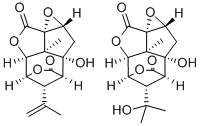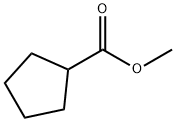Picrotoxin? , >98% , 124-87-8
Synonym(s):
Cocculin;Picrotoxin, Anamirta cocculin - CAS 124-87-8 - Calbiochem
CAS NO.:124-87-8
Empirical Formula: C30H34O13
Molecular Weight: 602.58
MDL number: MFCD00074824
EINECS: 204-716-6
PRODUCT Properties
| Melting point: | 203 °C(lit.) |
| alpha | D16 -29.3° (c = 4 in abs ethanol) |
| Boiling point: | 571.75°C (rough estimate) |
| Density | 1,28 g/cm3 |
| refractive index | 1.6000 (estimate) |
| storage temp. | Store at RT |
| solubility | ethanol: 50 mg/mL, clear to slightly hazy |
| form | powder |
| color | white to light yellow |
| Water Solubility | 4.083g/L(room temperature) |
| Merck | 14,7415 |
| BRN | 3894406 |
| EPA Substance Registry System | Picrotoxin (124-87-8) |
Description and Uses
Picrotoxin, also known as cocculin, appears as white to light beige crystalline material. It is isolated from Cocculus indicus (Fructus cocculi), fishberries, or Indian berries. Picrotoxin is a colourless, flexible, shining, prismatic crystals, or a micro-crystalline powder. It is odourless, has a very bitter taste, and is permanent in the air. Picrotoxin is soluble in hot water, readily soluble in strong ammonia water, and in aqueous solutions of sodium hydroxide, soluble in dilute acids, and alkalis as well as in glacial acetic acid, sparingly soluble in chloroform and very slightly soluble in cold water and alcohol. Picrotoxin is stable under normal temperatures and pressures and decompose when exposed to light. Picrotoxin is incompatible with strong oxidising agents, strong acids, strong bases, light.
Picrotoxin has been used:
- as non-competitive antagonist for the γ-aminobutyric acid (GABAA) for studying synchronized burst (SB) dynamics
- as a component of extracellular saline for blocking glutamate and acetylcholine receptors in neurons
- as a component of artificial cerebrospinal fluid (ACSF) for voltage-clamp recordings studies in dissociated cortical neurons
Safety
| Symbol(GHS) |  GHS06 |
| Signal word | Danger |
| Hazard statements | H300 |
| Precautionary statements | P264-P270-P301+P310+P330-P405-P501 |
| Hazard Codes | T+,T,N |
| Risk Statements | 28-52/53 |
| Safety Statements | 28-36/37/39-45-61 |
| RIDADR | UN 3462 6.1/PG 2 |
| WGK Germany | 3 |
| RTECS | TJ9100000 |
| F | 8-10 |
| Hazard Note | Very Toxic |
| HazardClass | 6.1(a) |
| PackingGroup | I |
| HS Code | 29322985 |
| Hazardous Substances Data | 124-87-8(Hazardous Substances Data) |
| Toxicity | LD50 i.p. in mice: 7.2 mg/kg (Setnikar) |






